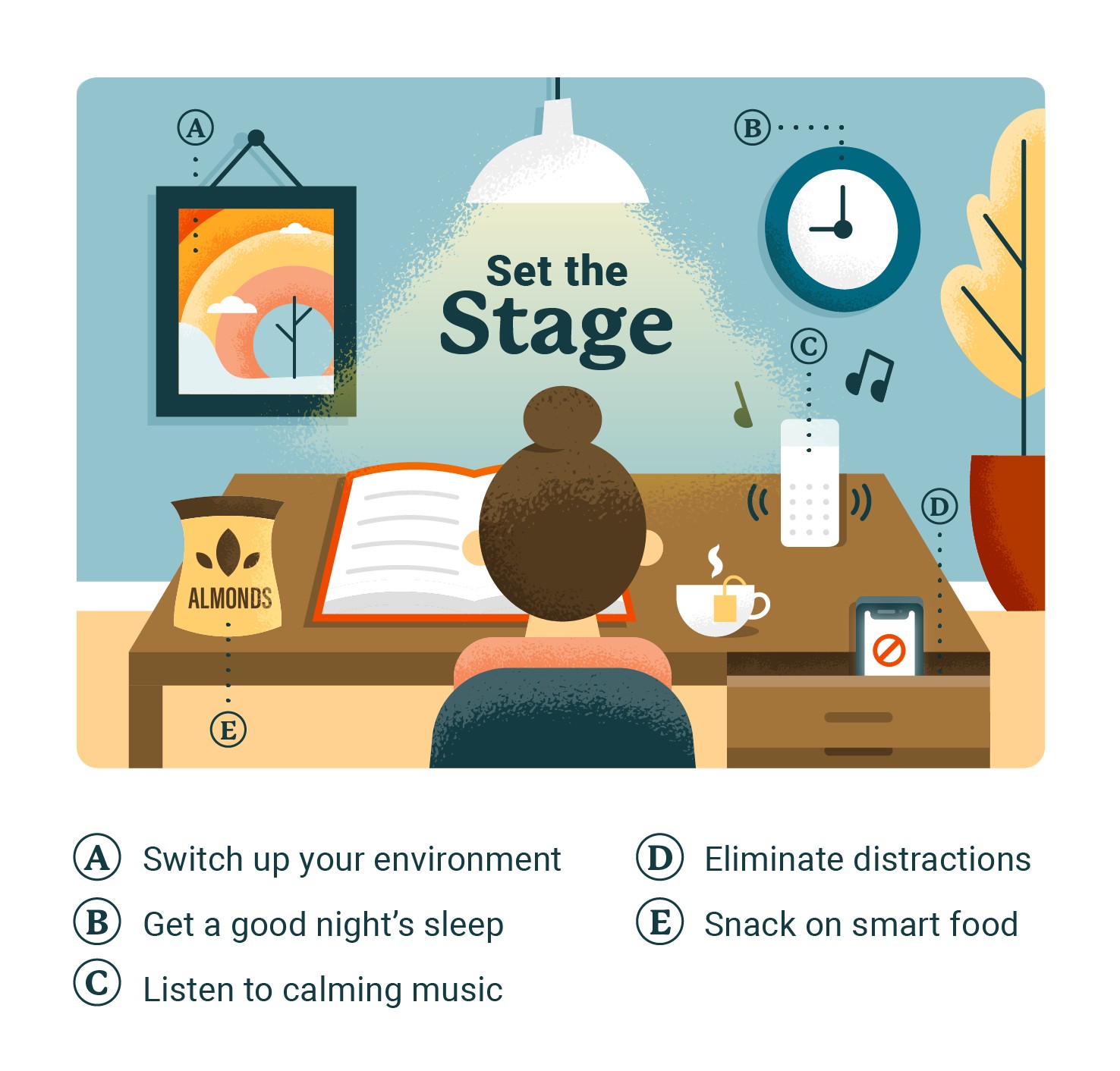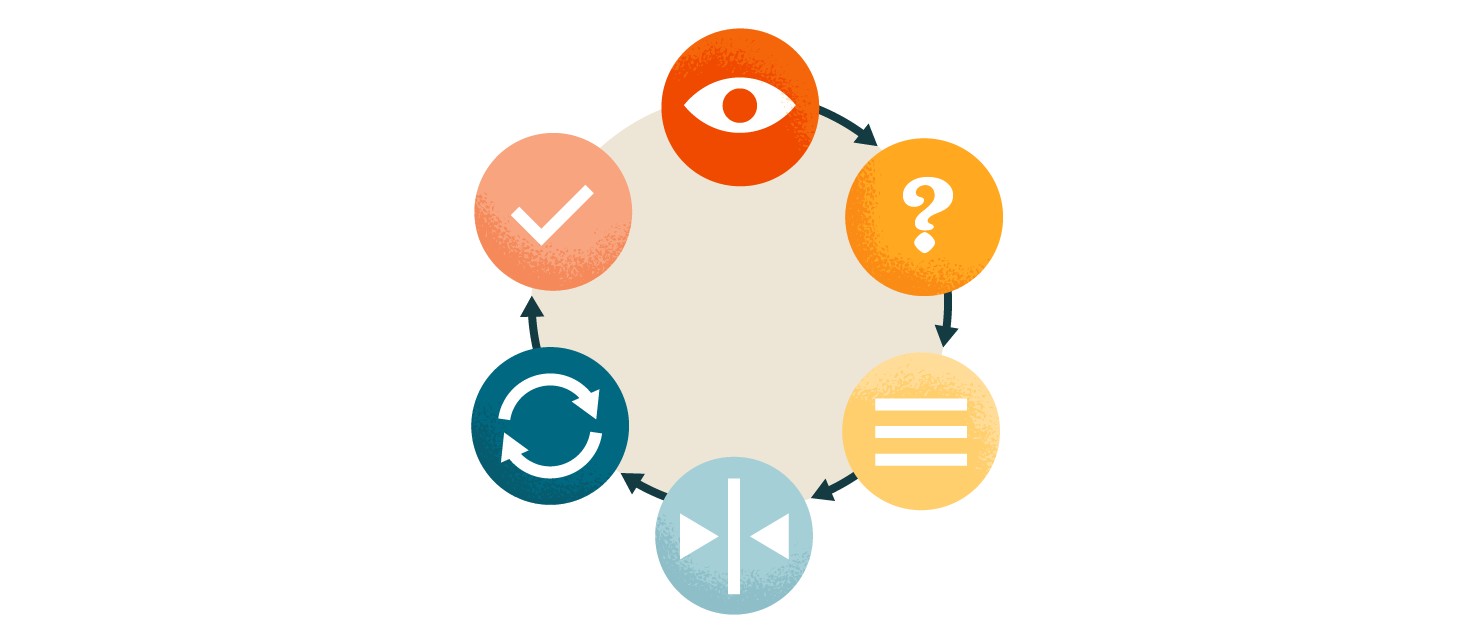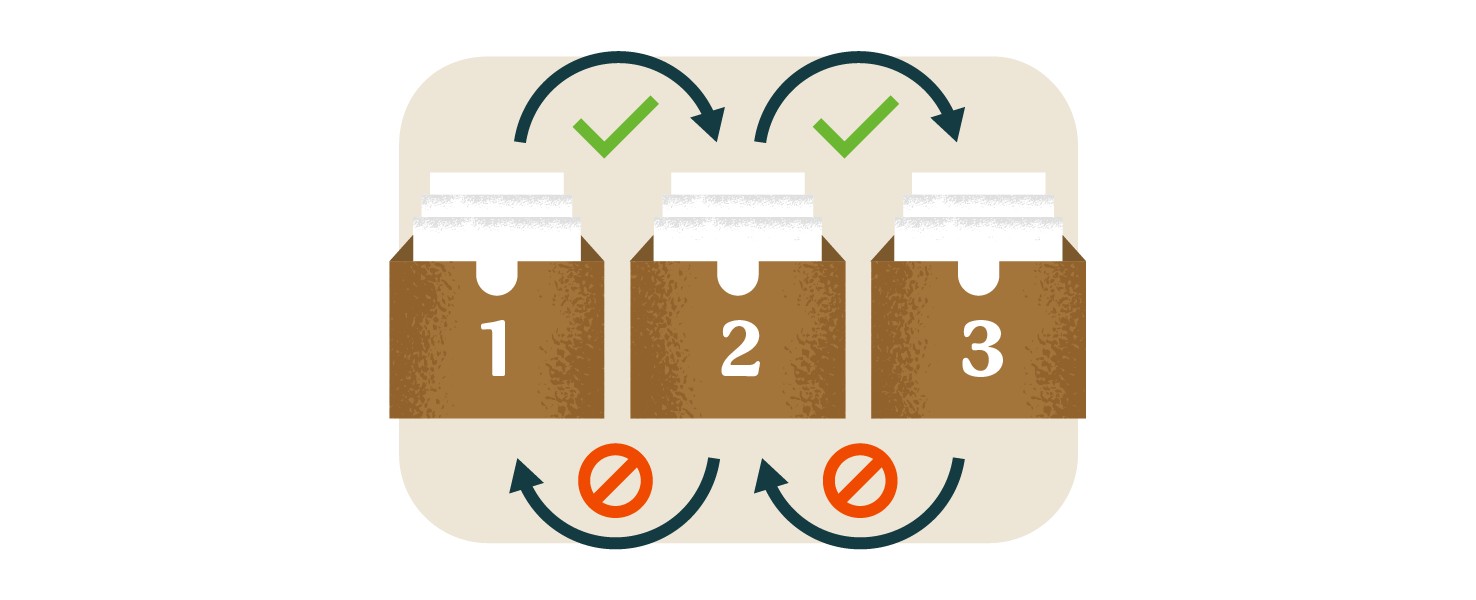A Brilliant Solution Study Guide offers powerful strategies and techniques to help you master your course material effectively and efficiently. At conduct.edu.vn, we provide a comprehensive guide to enhance your study habits, improve memory retention, and reduce exam stress, ensuring academic success and comprehensive learning. Our resource includes practical advice, proven methods, and study ethics that can transform how you approach learning.
Table of Contents
- Understanding the Importance of a Brilliant Study Guide
- Setting the Stage for Effective Studying
- Top 10 Study Methods and Tips
- SQ3R Study Technique: A Step-by-Step Guide
- Retrieval Practice: Enhancing Memory Recall
- Spaced Practice: Optimizing Long-Term Retention
- PQ4R Method: A Comprehensive Learning Approach
- Feynman Technique: Simplifying Complex Concepts
- Leitner System: Mastering Flashcards Effectively
- Color-Coded Notes: Boosting Memory and Organization
- Mind Mapping: Visualizing Knowledge
- Exercise Before Studying: Energizing Your Brain
- Studying Before Bed: Consolidating Memories
- Creating an Effective Study Schedule
- Leveraging Technology for Studying
- The Role of Nutrition and Hydration in Studying
- Managing Stress and Test Anxiety
- Study Groups: Collaborative Learning
- Effective Note-Taking Strategies
- Utilizing Past Papers for Exam Preparation
- Staying Motivated Throughout Your Studies
- Ethical Considerations in Studying
- Avoiding Common Study Mistakes
- Resources for Further Study
- Frequently Asked Questions (FAQs)
1. Understanding the Importance of a Brilliant Study Guide
A study guide is more than just a collection of notes; it’s a strategic tool designed to maximize learning and retention. It helps students organize information, focus on key concepts, and prepare effectively for exams. A well-crafted study guide can transform the way you learn, making the process more efficient and less stressful.
Why Use a Study Guide?
- Organized Information: A study guide helps you structure your notes and readings in a logical manner.
- Focus on Key Concepts: It highlights the most important information, ensuring you don’t get bogged down in unnecessary details.
- Effective Exam Preparation: A study guide provides a clear roadmap for what you need to know and how to prepare.
- Improved Retention: By actively engaging with the material, you enhance memory and understanding.
- Reduced Stress: Knowing you are well-prepared can significantly reduce anxiety and boost confidence.
Effective study guides are crucial for students of all ages and across various disciplines. They promote proactive learning, critical thinking, and better academic outcomes. By adopting the right strategies, you can tailor your study approach to suit your individual needs and learning style.
2. Setting the Stage for Effective Studying
Before diving into study methods, it’s essential to create an environment conducive to learning. Your physical and mental state significantly impacts your ability to concentrate and retain information. Here are key elements to consider:
Optimize Your Physical Environment
- Dedicated Study Space: Choose a quiet, well-lit area free from distractions.
- Ergonomics: Ensure your desk and chair are comfortable and promote good posture.
- Organization: Keep your study area tidy and organized to minimize visual clutter.
- Temperature: Maintain a comfortable room temperature to avoid feeling too hot or too cold.
Manage Your Mental State
- Sufficient Sleep: Aim for 7-9 hours of quality sleep each night to improve cognitive function.
- Stress Reduction: Practice relaxation techniques such as meditation, deep breathing, or yoga.
- Mindfulness: Stay present and focused on the task at hand, avoiding multitasking.
- Positive Attitude: Approach your studies with a positive mindset and belief in your ability to succeed.
Nutrition and Hydration
- Healthy Diet: Consume balanced meals rich in fruits, vegetables, whole grains, and lean protein.
- Hydration: Drink plenty of water throughout the day to keep your brain functioning optimally.
- Avoid Processed Foods: Limit sugary snacks and processed foods, which can lead to energy crashes and reduced focus.
By optimizing your environment and mental state, you can create a foundation for effective studying. These preparatory steps set the stage for better concentration, improved memory, and enhanced overall learning.
3. Top 10 Study Methods and Tips
To truly excel in your studies, it’s important to adopt a variety of study methods that cater to your learning style and the specific demands of your coursework. Here are ten highly effective study techniques, complete with practical tips for implementation:
- SQ3R Technique: This method enhances reading comprehension by surveying, questioning, reading, reciting, and reviewing material.
- Retrieval Practice: Improve memory by actively recalling information without looking at your notes or textbook.
- Spaced Practice: Distribute your study sessions over time to enhance long-term retention.
- PQ4R Method: Preview, question, read, reflect, recite, and review to actively engage with the material.
- Feynman Technique: Explain concepts in simple terms to identify gaps in your understanding.
- Leitner System: Use flashcards and spaced repetition to master new information.
- Color-Coded Notes: Organize and prioritize information using different colors.
- Mind Mapping: Visually organize information in a diagram to see relationships between concepts.
- Exercise Before Studying: Boost energy and focus with a short workout.
- Study Before Bed: Consolidate memories by reviewing material before sleeping.
These methods, when applied consistently, can significantly improve your study habits, memory retention, and overall academic performance. Each technique offers a unique approach to learning, allowing you to tailor your study sessions to suit your individual needs and preferences.
4. SQ3R Study Technique: A Step-by-Step Guide
The SQ3R method is a powerful reading comprehension technique designed to help students identify key facts and retain information from textbooks. It stands for Survey, Question, Read, Recite, and Review.
Step-by-Step Guide to SQ3R
-
Survey (S)
- Purpose: To get an overview of the material.
- How to Do It: Skim the chapter, noting headings, subheadings, images, charts, and summaries.
- Example: Before reading a chapter on climate change, look at the introduction, headings like “Causes of Climate Change” and “Effects of Climate Change,” and any graphs or images.
-
Question (Q)
- Purpose: To formulate questions that guide your reading.
- How to Do It: Turn headings and subheadings into questions.
- Example: Turn “Causes of Climate Change” into “What are the main causes of climate change?”
-
Read (R)
- Purpose: To find answers to your questions.
- How to Do It: Read the chapter section by section, looking for answers to the questions you formulated.
- Example: Read the section on “Causes of Climate Change” and look for the main factors contributing to it.
-
Recite (R)
- Purpose: To summarize and recall the information.
- How to Do It: After reading a section, summarize it in your own words, either verbally or in writing.
- Example: After reading the section on “Causes of Climate Change,” summarize the main causes in your own words.
-
Review (R)
- Purpose: To reinforce your understanding.
- How to Do It: Review the entire chapter, quiz yourself on the questions, and re-read any sections you need to.
- Example: Review all sections of the chapter, quiz yourself on the causes and effects of climate change, and re-read any sections that are unclear.
Benefits of SQ3R
- Improved Comprehension: By actively engaging with the material, you enhance your understanding.
- Better Retention: Summarizing and reviewing information helps you remember it longer.
- Focused Reading: Having questions to answer keeps you focused and engaged.
- Efficient Studying: This method makes your study sessions more productive and effective.
By following these steps, you can transform your reading into an active and engaging process, improving your comprehension and retention of the material.
5. Retrieval Practice: Enhancing Memory Recall
Retrieval practice is a powerful study technique focused on remembering information without referring to your notes or textbook. This active recall strengthens memory and promotes deeper understanding.
How to Implement Retrieval Practice
-
Practice Tests:
- Method: Use practice tests or questions to quiz yourself without looking at your notes or textbook.
- Example: After studying a chapter on biology, take a practice test to recall the key concepts and definitions.
-
Create Unique Questions:
- Method: Act as the teacher and create questions that you think might be on an exam.
- Example: If you are studying economics, create questions about supply and demand, market equilibrium, and elasticity.
-
Use Flashcards:
- Method: Create flashcards, but practice active recall. Instead of flipping the card over prematurely, write down the answer and then check.
- Example: Create flashcards for important historical dates and events. Write down the date and event from memory before flipping the card over.
-
Concept Mapping:
- Method: Start with a central concept and try to recall related ideas and information.
- Example: Start with the concept of “photosynthesis” and try to recall the inputs, outputs, and steps involved in the process.
-
Teach Someone Else:
- Method: Explain the material to someone else from memory. This forces you to retrieve and articulate the information.
- Example: Teach a friend or family member about the principles of physics you’ve been studying.
Benefits of Retrieval Practice
- Strengthens Memory: Actively recalling information reinforces memory pathways.
- Identifies Knowledge Gaps: Reveals areas where you need to focus more.
- Improves Understanding: Enhances comprehension through active engagement.
- Reduces Test Anxiety: Builds confidence by demonstrating what you know.
By consistently incorporating retrieval practice into your study routine, you can significantly improve your memory recall and academic performance.
6. Spaced Practice: Optimizing Long-Term Retention
Spaced practice, also known as distributed practice, involves reviewing material over an extended period rather than cramming it all at once. This technique leverages the spacing effect, which enhances long-term retention by allowing your brain to consolidate information more effectively.
How to Implement Spaced Practice
-
Create a Study Schedule:
- Method: Plan your study sessions in advance, spacing them out over days or weeks.
- Example: Instead of studying for an exam the night before, review the material for 30 minutes each day for two weeks.
-
Review at Increasing Intervals:
- Method: Gradually increase the time between review sessions as you become more familiar with the material.
- Example: Review the material the day after learning it, then again three days later, then a week later, and so on.
-
Use a Calendar or App:
- Method: Utilize a calendar or study app to schedule and track your spaced practice sessions.
- Example: Use Google Calendar or an app like Anki to schedule regular reviews of your flashcards.
-
Interleave Topics:
- Method: Mix up different subjects or topics during your study sessions rather than focusing on one topic for an extended period.
- Example: Alternate between studying math, history, and science in a single study session.
Sample Spaced Practice Schedule
| Day | Activity |
|---|---|
| Day 1 | Learn the material in class |
| Day 2 | Revisit and review for 30 minutes |
| Day 4 | Revisit and review for 20 minutes |
| Day 8 | Revisit and review for 15 minutes |
| Day 15 | Revisit and review for 10 minutes |
| Day 30 | Final review before the exam |






Benefits of Spaced Practice
- Enhanced Long-Term Retention: Spaced practice promotes better memory consolidation and recall.
- Improved Understanding: Reviewing material at intervals allows you to make connections between ideas and build a deeper understanding.
- Reduced Cramming: By distributing your study sessions, you can avoid the stress and ineffectiveness of last-minute cramming.
- Better Exam Performance: Spaced practice leads to improved performance on exams and assessments.
By incorporating spaced practice into your study routine, you can optimize your learning and achieve better academic outcomes.
7. PQ4R Method: A Comprehensive Learning Approach
The PQ4R method is a structured reading and study technique that promotes active learning and improved comprehension. It stands for Preview, Question, Read, Reflect, Recite, and Review. This method encourages students to engage deeply with the material, leading to better retention and understanding.
Step-by-Step Guide to PQ4R
-
Preview (P)
- Purpose: To get an overview of the material before reading it in detail.
- How to Do It: Skim the chapter, paying attention to headings, subheadings, introductions, summaries, and any visual aids.
- Example: Before reading a chapter on evolution, look at the title, introduction, headings like “Natural Selection” and “Genetic Variation,” and any diagrams or illustrations.
-
Question (Q)
- Purpose: To formulate questions that will guide your reading and help you focus on key concepts.
- How to Do It: Turn headings and subheadings into questions that you expect the chapter to answer.
- Example: Turn “Natural Selection” into “How does natural selection work?” and “Genetic Variation” into “What causes genetic variation?”
-
Read (R)
- Purpose: To find answers to the questions you formulated and gain a deeper understanding of the material.
- How to Do It: Read the chapter section by section, actively looking for answers to your questions and taking notes on key points.
- Example: Read the section on “Natural Selection” and look for explanations of how it works, including examples of organisms adapting to their environments.
-
Reflect (R)
- Purpose: To think critically about the material and connect it to what you already know.
- How to Do It: Pause after each section and ask yourself how the information relates to your prior knowledge and experiences. Consider any implications or applications of the concepts.
- Example: After reading about natural selection, reflect on how it explains the diversity of life on Earth and how it relates to concepts like adaptation and survival of the fittest.
-
Recite (R)
- Purpose: To summarize and recall the information in your own words.
- How to Do It: After reading a section, try to recite the main points from memory without looking at the text. Write down or speak aloud your summary.
- Example: After reading about natural selection, recite the key steps in the process, including variation, inheritance, and differential survival.
-
Review (R)
- Purpose: To reinforce your understanding and ensure you can recall the information later.
- How to Do It: Review the entire chapter, focusing on the questions you formulated and the main points you identified. Re-read any sections that are unclear.
- Example: Review all sections of the chapter, quiz yourself on the questions about natural selection and genetic variation, and re-read any sections that you found challenging.
Benefits of PQ4R
- Active Learning: PQ4R promotes active engagement with the material, leading to better understanding.
- Improved Comprehension: By previewing, questioning, and reflecting, you gain a deeper understanding of the concepts.
- Better Retention: Reciting and reviewing the information helps you remember it longer.
- Efficient Studying: This method makes your study sessions more focused and productive.
By following these steps, you can transform your reading into an active and engaging process, improving your comprehension and retention of the material.
8. Feynman Technique: Simplifying Complex Concepts
The Feynman Technique is a powerful learning method developed by physicist Richard Feynman. It emphasizes understanding concepts deeply by explaining them in simple, easy-to-understand terms. This technique is particularly useful for breaking down complex subjects and identifying gaps in your knowledge.
Steps of the Feynman Technique
-
Choose a Concept:
- Method: Select the concept you want to understand.
- Example: “Quantum Entanglement” in physics.
-
Teach It to a Child:
- Method: Explain the concept in simple terms, as if you were teaching it to someone with no prior knowledge of the subject.
- Example: “Imagine two coins that are linked together. When you flip one and it lands on heads, the other one instantly lands on tails, no matter how far apart they are.”
-
Identify Gaps:
- Method: As you explain, note the areas where you struggle or cannot simplify the concept.
- Example: You might struggle to explain why the coins are linked and how this happens at a subatomic level.
-
Review and Simplify:
- Method: Go back to your sources (textbooks, notes) to fill in the gaps. Then, try explaining the concept again, simplifying your language even further.
- Example: Research the underlying principles of quantum entanglement, such as superposition and quantum measurement, and try to explain them in simpler terms.
-
Organize and Convey:
- Method: Once you can explain the concept simply and accurately, organize your explanation in a clear and logical manner.
- Example: Create a simple diagram or outline to illustrate the key steps in quantum entanglement and explain it to someone else.
Benefits of the Feynman Technique
- Deep Understanding: Forces you to confront and address gaps in your knowledge.
- Improved Simplification: Enhances your ability to explain complex topics in simple terms.
- Effective Learning: Promotes active learning and retention.
- Enhanced Communication: Improves your communication skills by teaching you to explain concepts clearly.
By using the Feynman Technique, you can transform complex information into easily digestible knowledge, leading to a deeper and more comprehensive understanding of any subject.
9. Leitner System: Mastering Flashcards Effectively
The Leitner System is an effective method for using flashcards that involves spaced repetition to optimize learning. It is based on the principle that you should focus more on flashcards you find difficult and less on those you know well.
How the Leitner System Works
-
Prepare Flashcards:
- Method: Create flashcards with questions on one side and answers on the other.
- Example: For vocabulary, write the word on one side and the definition on the other. For historical facts, write the event on one side and the date on the other.
-
Set Up Boxes:
- Method: Create several boxes labeled with increasing intervals (e.g., Box 1, Box 2, Box 3, Box 4, Box 5).
- Example:
- Box 1: Review daily
- Box 2: Review every two days
- Box 3: Review every four days
- Box 4: Review every nine days
- Box 5: Review every 14 days
-
Start with Box 1:
- Method: Begin by placing all your flashcards in Box 1.
- Process:
- Take a card from Box 1 and try to answer the question.
- If you answer correctly, move the card to Box 2.
- If you answer incorrectly, keep the card in Box 1.
-
Move Cards Through the Boxes:
- Method: Follow the review schedule for each box.
- Process:
- For Box 2, review the cards every two days. If you answer correctly, move the card to Box 3. If not, move it back to Box 1.
- Repeat this process for each box, following the review schedule.
-
Maintain Consistency:
- Method: Stick to the review schedule and regularly update the positions of the cards.
- Tip: Use a digital tool like Anki or Quizlet to automate the Leitner System.
Benefits of the Leitner System
- Efficient Learning: Focuses your efforts on the cards you find most difficult.
- Spaced Repetition: Reinforces learning through spaced intervals, improving long-term retention.
- Customized Review: Allows you to review cards at a pace that suits your individual needs.
- Effective Flashcard Use: Maximizes the effectiveness of flashcards as a learning tool.
By using the Leitner System, you can optimize your flashcard study sessions, ensuring that you master the material efficiently and effectively.
10. Color-Coded Notes: Boosting Memory and Organization
Color-coded notes are a dynamic and effective way to organize new information, enhance memory recall, and prioritize important ideas. This method leverages the power of visual cues to improve learning and retention.
How to Implement Color-Coded Notes
-
Choose a Color Scheme:
- Method: Assign specific colors to different types of information.
- Example:
- Red: Key concepts and definitions
- Blue: Examples and illustrations
- Green: Supporting details and facts
- Yellow: Important dates and names
-
Use Highlighters and Pens:
- Method: Use colored highlighters and pens to mark and write notes according to your color scheme.
- Tip: Use a consistent color scheme across all your notes to avoid confusion.
-
Organize Topics by Color:
- Method: Use different colors to represent different topics or subjects.
- Example: Use purple for history, orange for science, and pink for literature.
-
Don’t Overdo It:
- Method: Use colors sparingly to highlight key information. Overusing colors can make your notes cluttered and difficult to read.
- Tip: Focus on highlighting only the most important information.
-
Review and Revise:
- Method: Regularly review your color-coded notes and revise them as needed.
- Tip: Use your color-coded notes as a visual aid during study sessions.
Benefits of Color-Coded Notes
- Improved Memory: Colors act as visual cues, making information easier to remember.
- Enhanced Organization: Color-coding helps you organize information in a logical and structured manner.
- Increased Focus: Using colors can help you focus on key information and avoid distractions.
- Better Retention: Visual cues improve retention by making your notes more engaging and memorable.
By implementing color-coded notes, you can transform your note-taking process into a dynamic and effective learning tool, enhancing your memory and overall academic performance.
11. Mind Mapping: Visualizing Knowledge
Mind mapping is a powerful visual tool that helps you organize information in a diagram, making it easier to understand and remember. It is particularly useful for brainstorming, note-taking, and studying complex topics.
How to Create a Mind Map
-
Start with the Central Topic:
- Method: Write the main topic in the center of a blank page.
- Example: “Cell Biology”
-
Add Main Branches:
- Method: Draw branches extending from the central topic, each representing a main idea or subtopic.
- Example: “Cell Structure,” “Cell Function,” “Cell Division”
-
Add Sub-Branches:
- Method: Connect sub-branches to the main branches, adding supporting details and information.
- Example:
- Under “Cell Structure”: “Cell Membrane,” “Nucleus,” “Cytoplasm”
- Under “Cell Function”: “Respiration,” “Photosynthesis,” “Protein Synthesis”
-
Use Keywords and Images:
- Method: Use keywords and images to represent ideas, rather than full sentences.
- Tip: Use different colors for each branch to make the mind map more visually appealing and easier to remember.
-
Connect Ideas:
- Method: Draw lines or arrows to connect related ideas and show relationships between concepts.
- Example: Connect “Cell Membrane” to “Transport” to show how the cell membrane functions in transporting substances in and out of the cell.
Benefits of Mind Mapping
- Improved Organization: Helps you organize information in a logical and structured manner.
- Enhanced Understanding: Makes it easier to see relationships between concepts and ideas.
- Better Memory: Visual cues and connections improve memory and retention.
- Increased Creativity: Encourages brainstorming and creative thinking.
By using mind mapping, you can transform complex information into a visually appealing and easy-to-understand format, enhancing your learning and retention.
12. Exercise Before Studying: Energizing Your Brain
Exercise is not just beneficial for physical health; it also has significant benefits for cognitive function and learning. Exercising before studying can increase energy levels, improve focus, and enhance memory.
Benefits of Exercise Before Studying
- Increased Blood Flow: Exercise increases blood flow to the brain, delivering more oxygen and nutrients.
- Improved Mood: Exercise releases endorphins, which can improve mood and reduce stress.
- Enhanced Focus: Exercise can help clear your mind and improve concentration.
- Boosted Memory: Exercise has been shown to enhance memory and learning.
How to Incorporate Exercise
-
Short Workouts:
- Method: Engage in a short workout (20-30 minutes) before your study session.
- Examples:
- Brisk walking
- Jogging
- Cycling
- Yoga
- Bodyweight exercises (e.g., push-ups, squats, lunges)
-
Simple Activities:
- Method: If you don’t have time for a full workout, try simple activities like:
- Stretching
- Walking up and down stairs
- Jumping jacks
- Method: If you don’t have time for a full workout, try simple activities like:
-
Timing:
- Method: Aim to exercise 30-60 minutes before your study session to allow your body and mind to recover.
-
Consistency:
- Method: Make exercise a regular part of your study routine to reap the long-term benefits.
By incorporating exercise into your study routine, you can energize your brain, improve focus, and enhance your overall learning experience.
13. Studying Before Bed: Consolidating Memories
Studying before bed can be a highly effective way to consolidate memories and improve recall. Sleep plays a crucial role in memory formation, and reviewing material before sleeping can enhance this process.
Benefits of Studying Before Bed
- Memory Consolidation: Sleep helps the brain organize and consolidate memories, making them easier to recall later.
- Improved Recall: Reviewing information before sleeping can improve your ability to recall it in the morning.
- Reduced Interference: Studying before bed reduces the interference of new information, allowing the brain to focus on consolidating the material you just reviewed.
How to Study Before Bed Effectively
-
Review Key Concepts:
- Method: Focus on reviewing key concepts and definitions rather than trying to learn new material.
- Example: Review flashcards, notes, or summaries of the main topics you studied during the day.
-
Avoid Intensive Learning:
- Method: Avoid engaging in intensive learning activities that require a lot of concentration.
- Tip: Keep your study sessions short and focused, lasting no more than 30-60 minutes.
-
Create a Relaxing Environment:
- Method: Study in a quiet and comfortable environment to promote relaxation.
- Tip: Avoid using electronic devices (e.g., smartphones, tablets) before bed, as the blue light can interfere with sleep.
-
Get Enough Sleep:
- Method: Aim for 7-9 hours of quality sleep each night to allow your brain to consolidate memories effectively.
By studying before bed, you can leverage the power of sleep to enhance memory consolidation and improve your ability to recall information, leading to better academic performance.
14. Creating an Effective Study Schedule
An effective study schedule is essential for managing your time and ensuring you cover all the necessary material. It helps you stay organized, reduce stress, and achieve your academic goals.
Steps to Create an Effective Study Schedule
-
Assess Your Coursework:
- Method: Make a list of all your courses, assignments, exams, and deadlines.
-
Allocate Time:
- Method: Allocate specific time slots for studying each subject, taking into account the difficulty and workload of each course.
-
Prioritize Tasks:
- Method: Prioritize tasks based on their importance and deadlines.
- Tip: Use a planner, calendar, or to-do list to keep track of your tasks and deadlines.
-
Be Realistic:
- Method: Don’t try to cram too much into your schedule. Be realistic about how much you can accomplish in a given amount of time.
-
Include Breaks:
- Method: Schedule regular breaks to avoid burnout and maintain focus.
- Tip: Use the Pomodoro Technique (study for 25 minutes, then take a 5-minute break) to maximize productivity.
-
Be Flexible:
- Method: Be prepared to adjust your schedule as needed to accommodate unexpected events or changes in your workload.
-
Review and Revise:
- Method: Regularly review your study schedule and revise it as needed to ensure it is still effective.
Sample Study Schedule
| Time | Monday | Tuesday | Wednesday | Thursday | Friday |
|---|---|---|---|---|---|
| 9:00 AM | Math | History | Math | History | Free Time |
| 11:00 AM | Science | Literature | Science | Literature | Free Time |
| 1:00 PM | Lunch | Lunch | Lunch | Lunch | Lunch |
| 2:00 PM | Study Group | Assignment | Study Group | Assignment | Library |
| 4:00 PM | Free Time | Free Time | Free Time | Free Time | Free Time |
| 7:00 PM | Review Notes | Review Notes | Review Notes | Review Notes | Review Notes |
By creating and following an effective study schedule, you can manage your time efficiently, reduce stress, and achieve your academic goals.
15. Leveraging Technology for Studying
Technology offers numerous tools and resources that can enhance your studying experience. From online libraries to study apps, leveraging technology can make your study sessions more efficient and effective.
Useful Technological Tools for Studying
-
Online Libraries:
- Tools: JSTOR, Google Scholar, university library databases.
- Benefits: Access to a vast collection of academic articles, books, and research papers.
-
Note-Taking Apps:
- Tools: Evernote, OneNote, Google Keep.
- Benefits: Organize notes, create digital notebooks, and access your notes from any device.
-
Flashcard Apps:
- Tools: Anki, Quizlet.
- Benefits: Create and study flashcards, use spaced repetition, and track your progress.
-
Mind Mapping Software:
- Tools: MindMeister, XMind.
- Benefits: Create visual diagrams to organize and understand complex topics.
-
Productivity Apps:
- Tools: Trello, Asana, Freedom.
- Benefits: Manage tasks, set goals, and block distractions to stay focused.
-
Collaboration Tools:
- Tools: Google Docs, Microsoft Teams, Slack.
- Benefits: Collaborate with classmates on group projects and study sessions.
-
Video Conferencing:
- Tools: Zoom, Skype, Google Meet.
- Benefits: Attend virtual lectures, participate in online discussions, and connect with instructors and classmates.
Tips for Using Technology Effectively
- Choose the Right Tools: Select tools that align with your learning style and study habits.
- Stay Organized: Use folders and tags to organize your digital resources.
- Limit Distractions: Block social media and other distracting websites during study sessions.
- Take Breaks: Use technology to set reminders and take regular breaks to avoid burnout.
By leveraging technology effectively, you can enhance your study sessions, improve your learning outcomes, and achieve your academic goals.
16. The Role of Nutrition and Hydration in Studying
Nutrition and hydration play a vital role in cognitive function and academic performance. Providing your brain with the right nutrients and staying hydrated can improve focus, memory, and overall learning.
Essential Nutrients for Brain Health
-
Omega-3 Fatty Acids:
- Sources: Fatty fish (salmon, tuna), flaxseeds, chia seeds, walnuts.
- Benefits: Support brain structure and function, improve memory and mood.
-
Antioxidants:
- Sources: Berries, leafy greens, dark chocolate, nuts.
- Benefits: Protect brain cells from damage, improve cognitive function.
-
B Vitamins:
- Sources: Whole grains, meat, eggs, dairy products, leafy greens.
- Benefits: Support nerve function, boost energy, improve mood.
-
Choline:
- Sources: Eggs, liver, soybeans, broccoli.
- Benefits: Essential for memory and learning, supports brain development.
-
Iron:
- Sources: Red meat, beans, spinach, fortified cereals.
- Benefits: Carries oxygen to the brain, supports cognitive function.